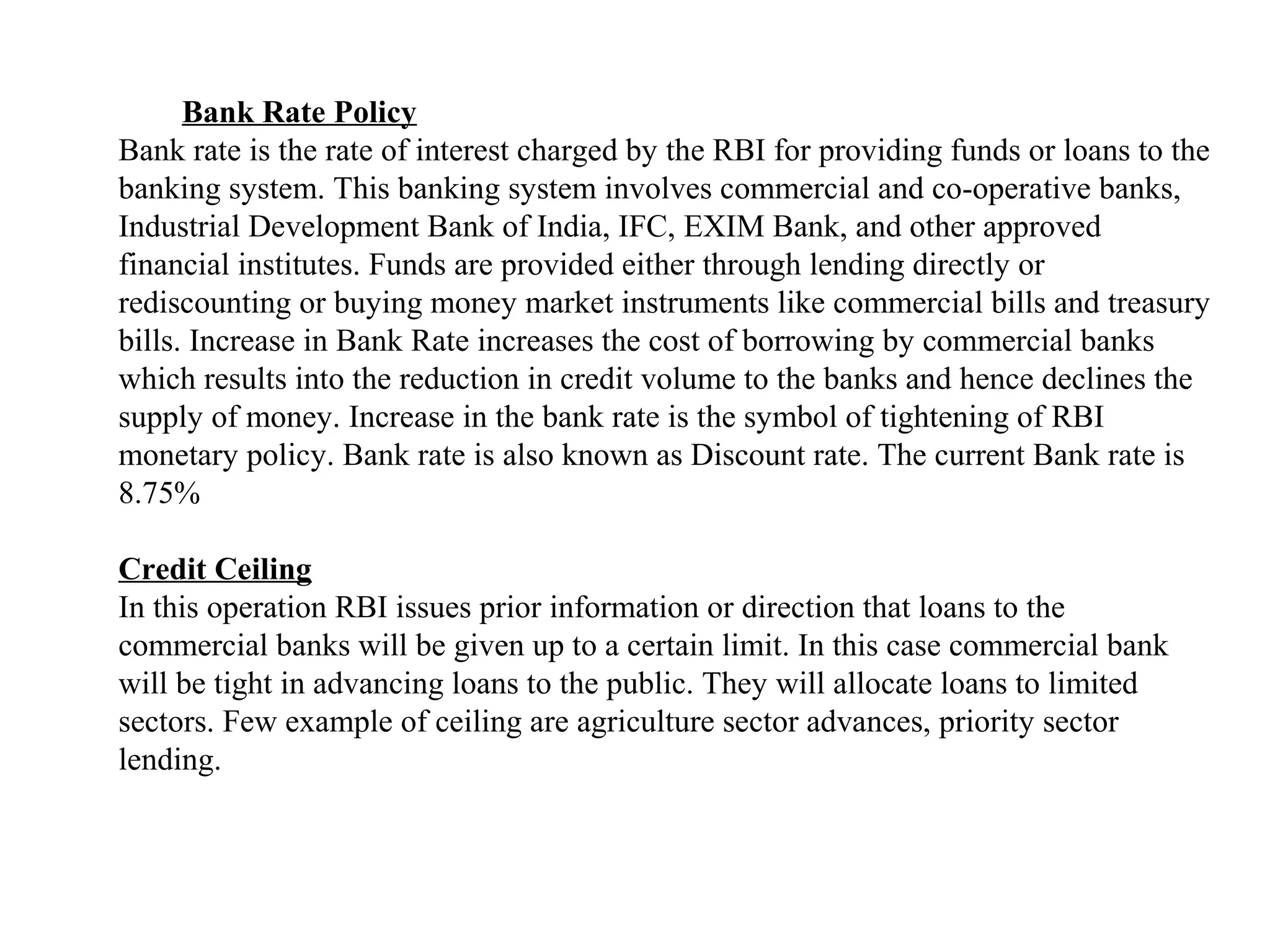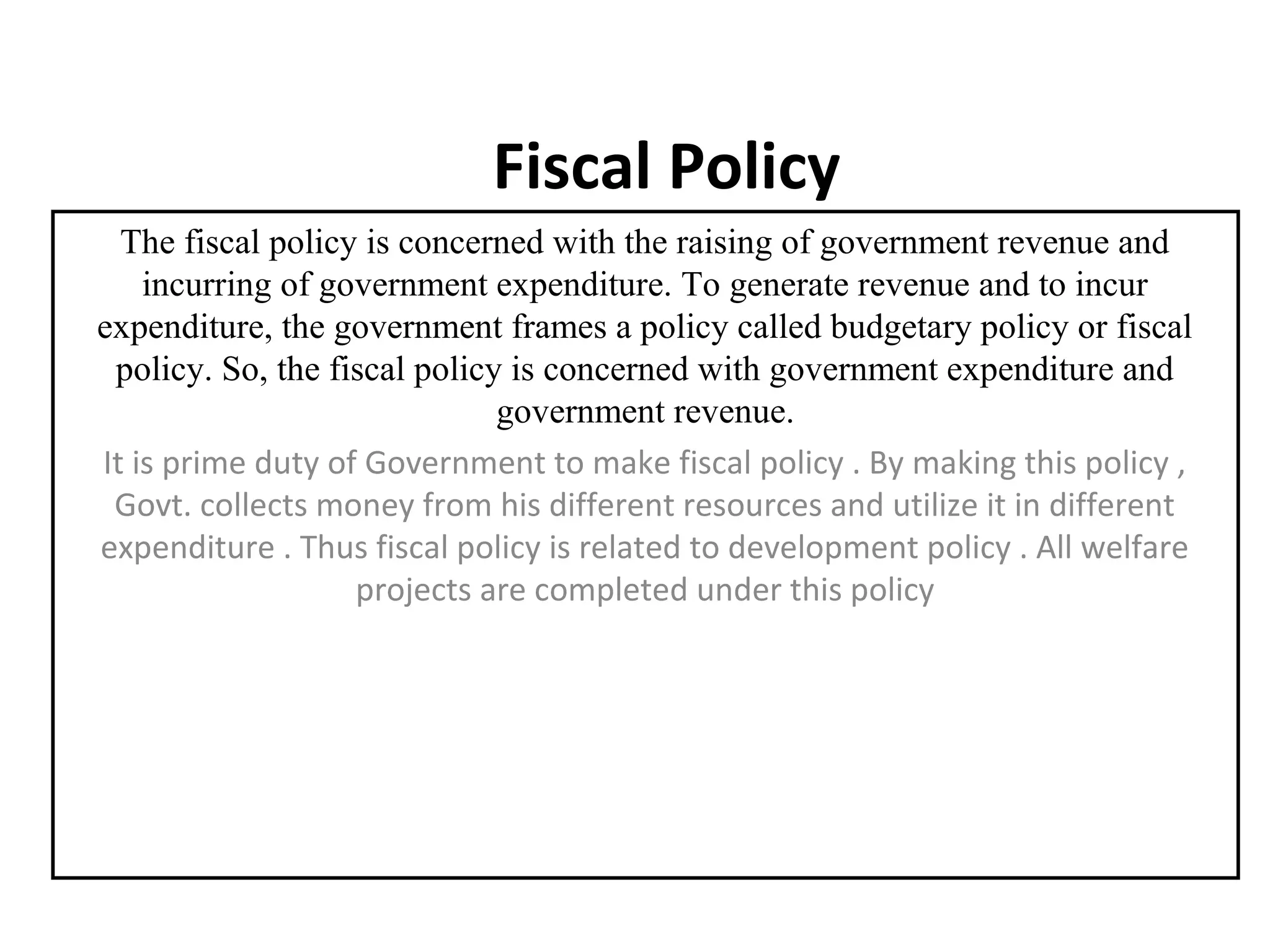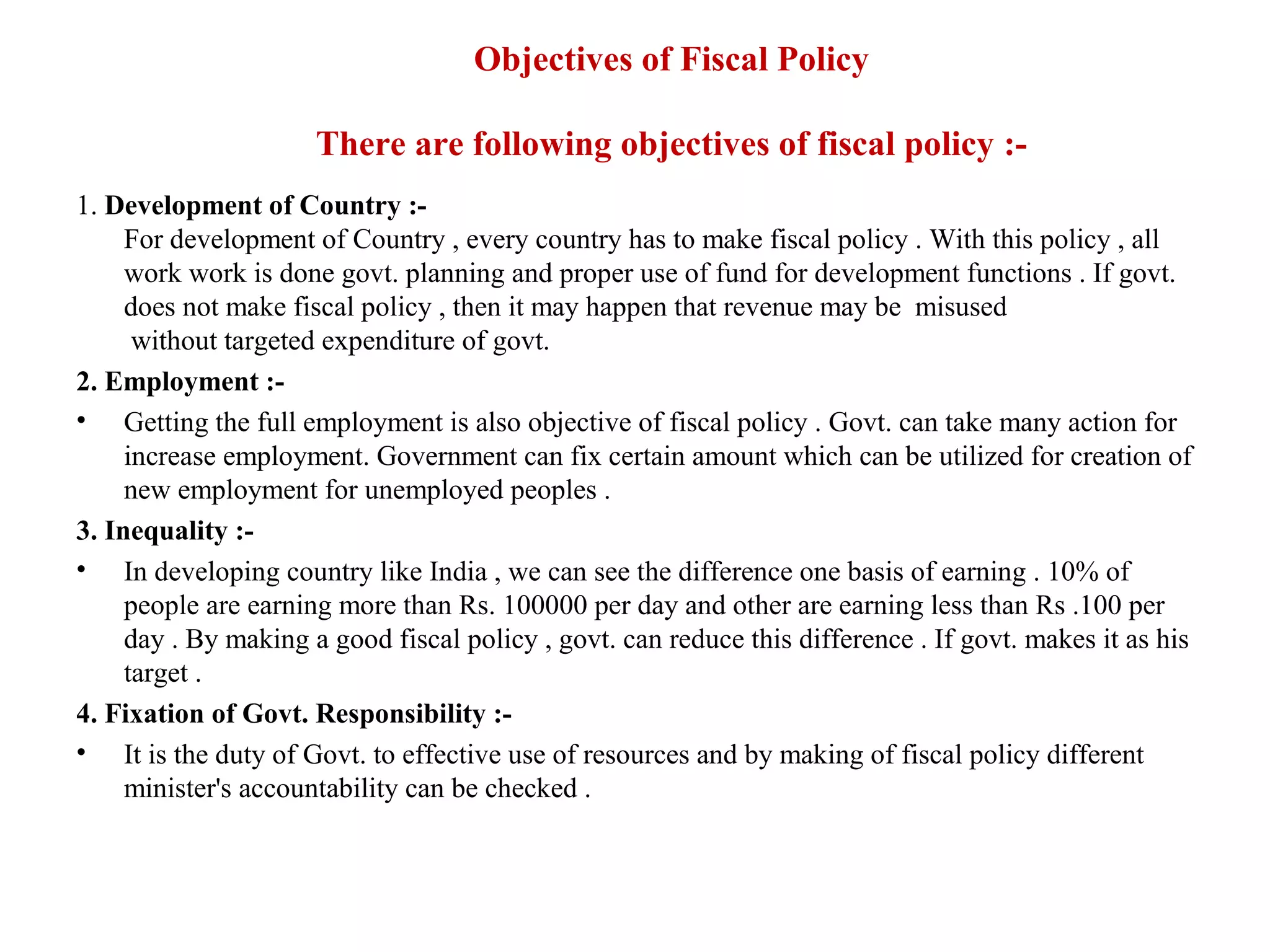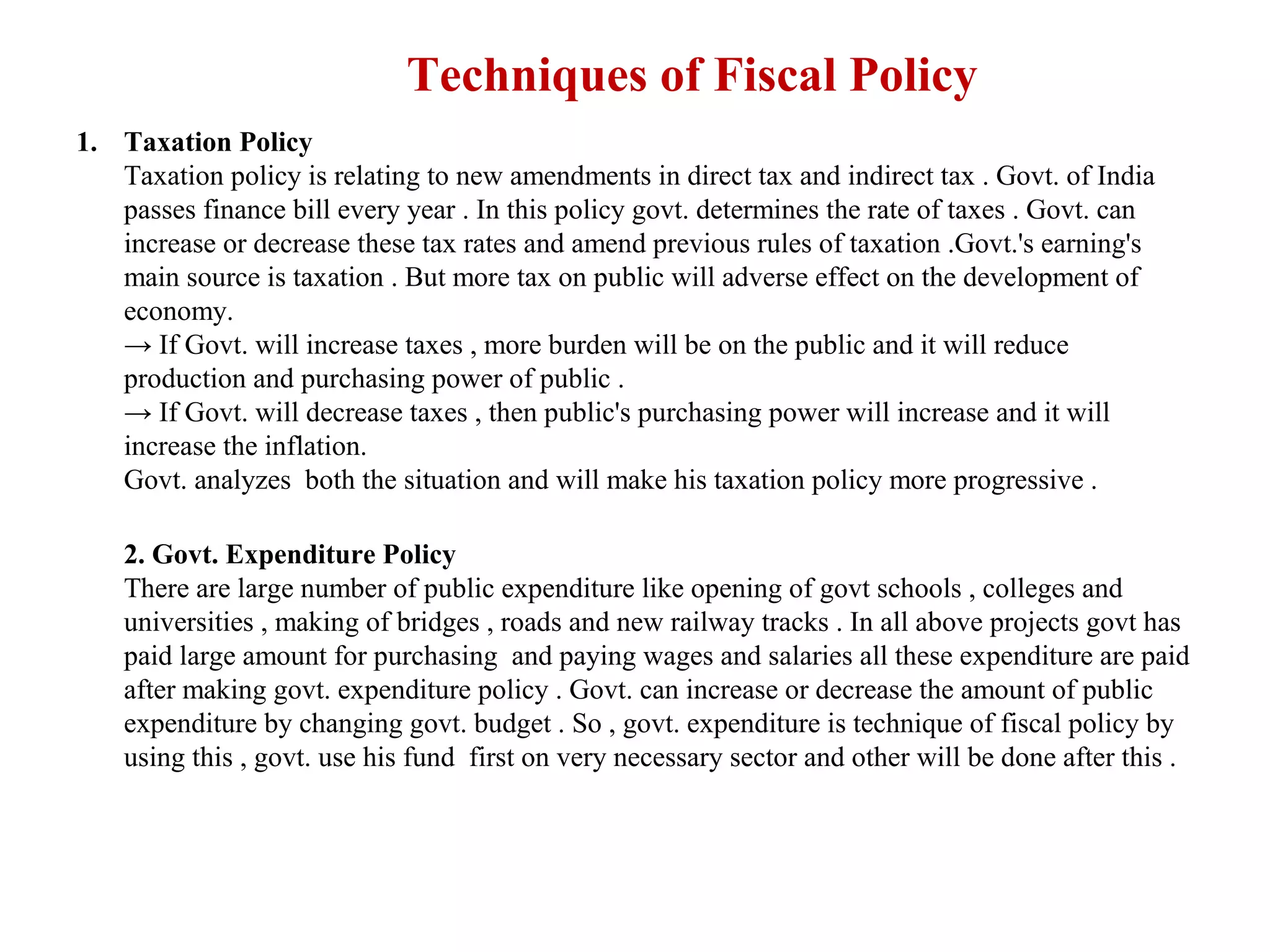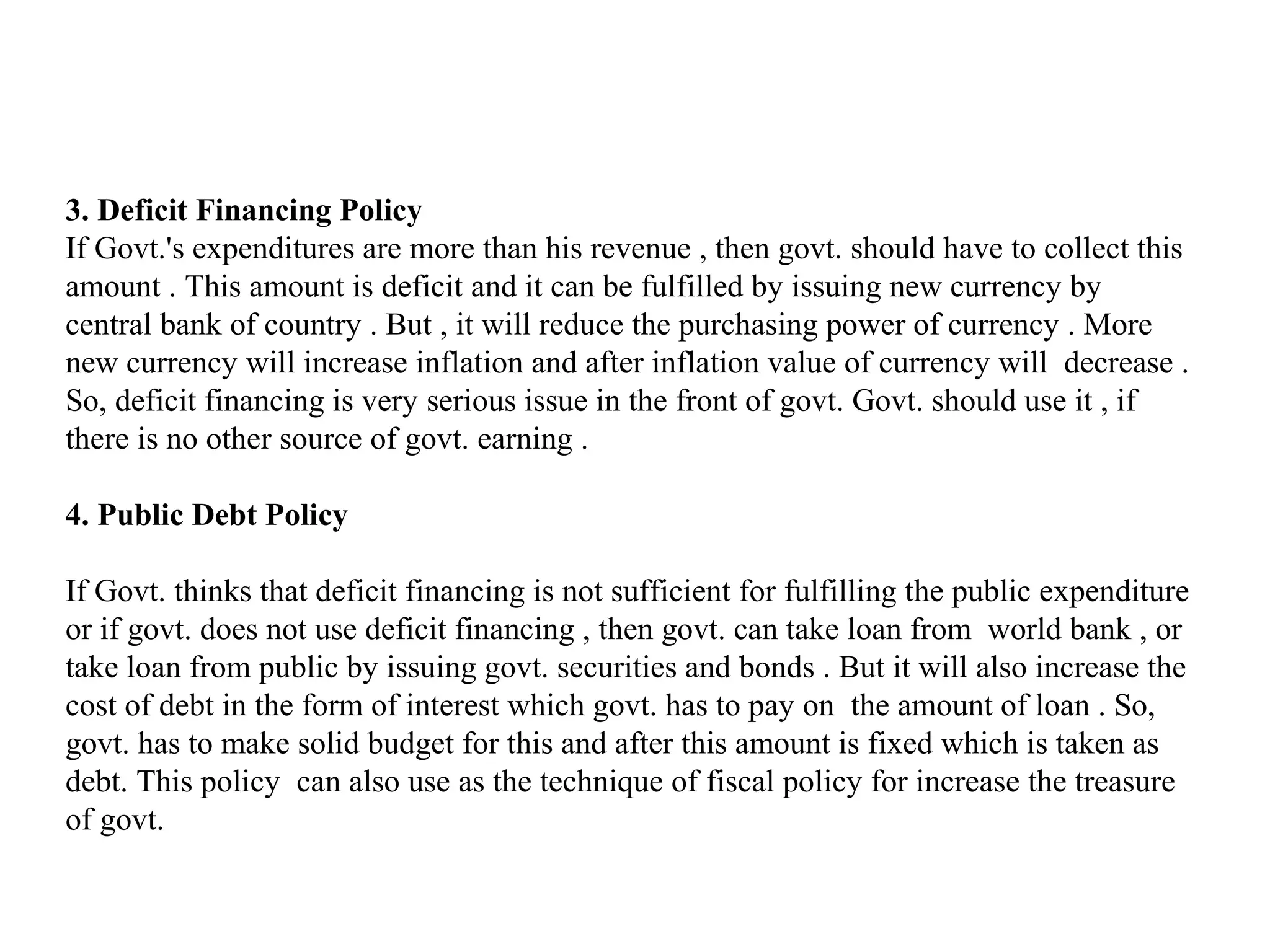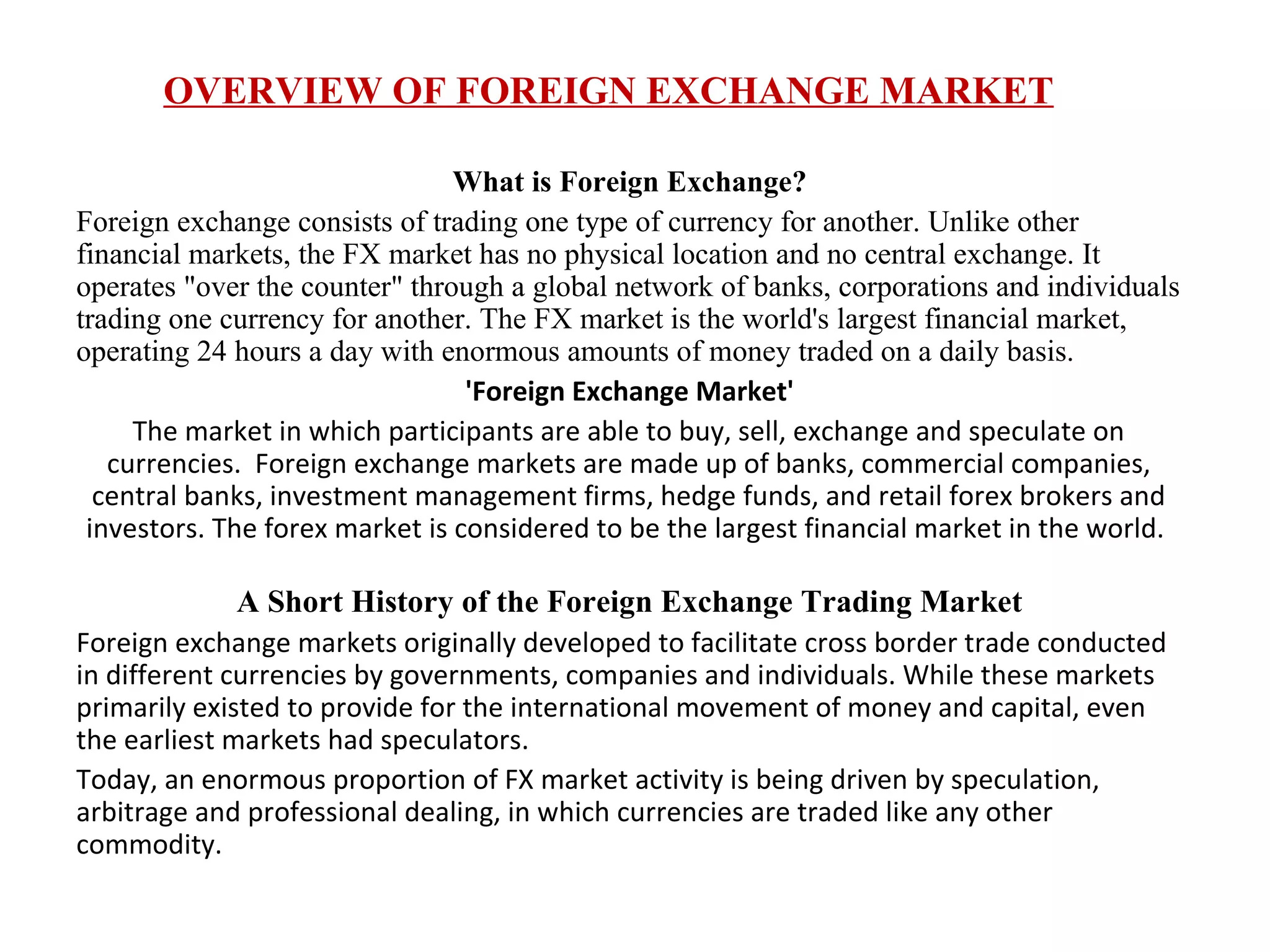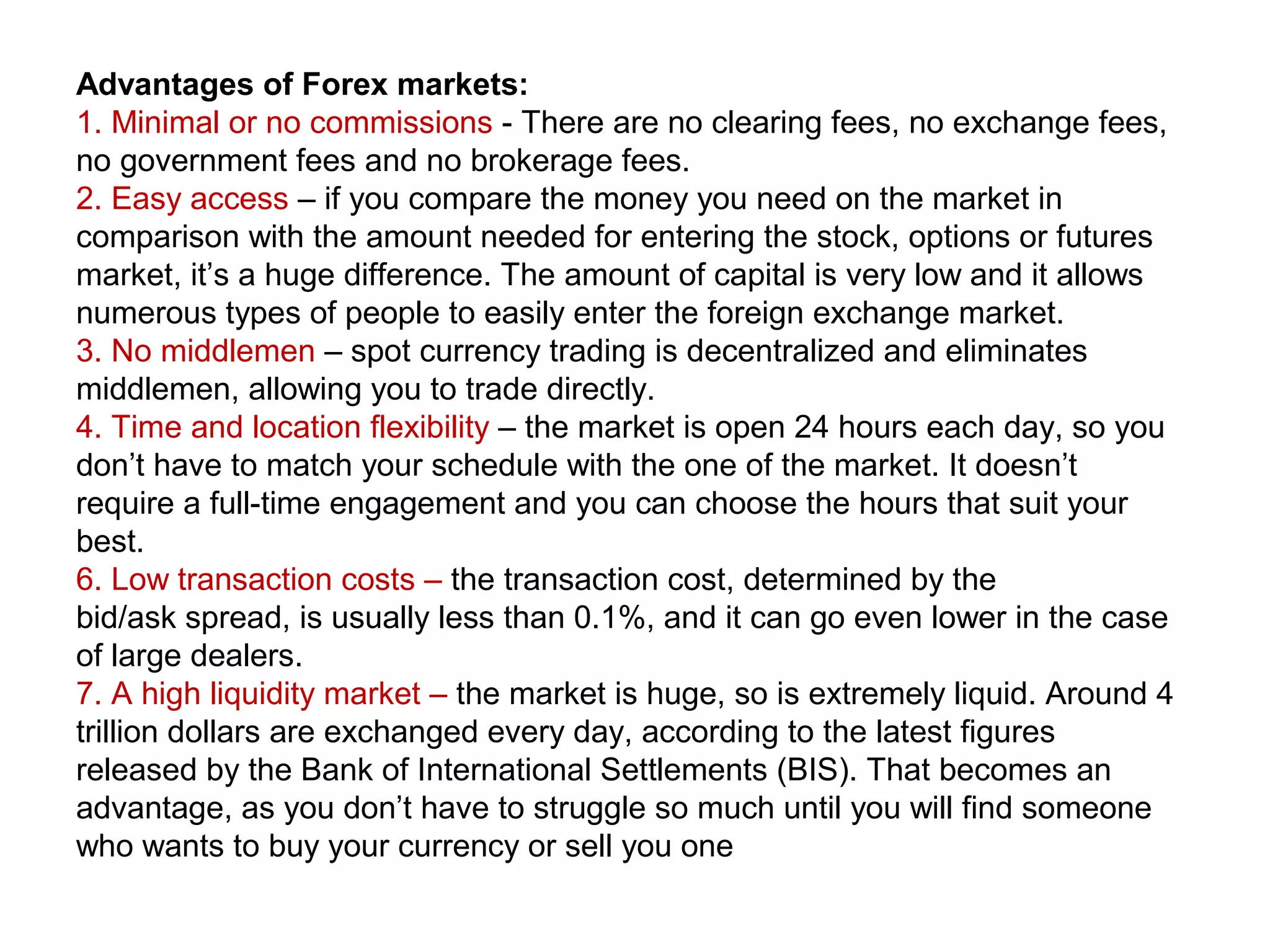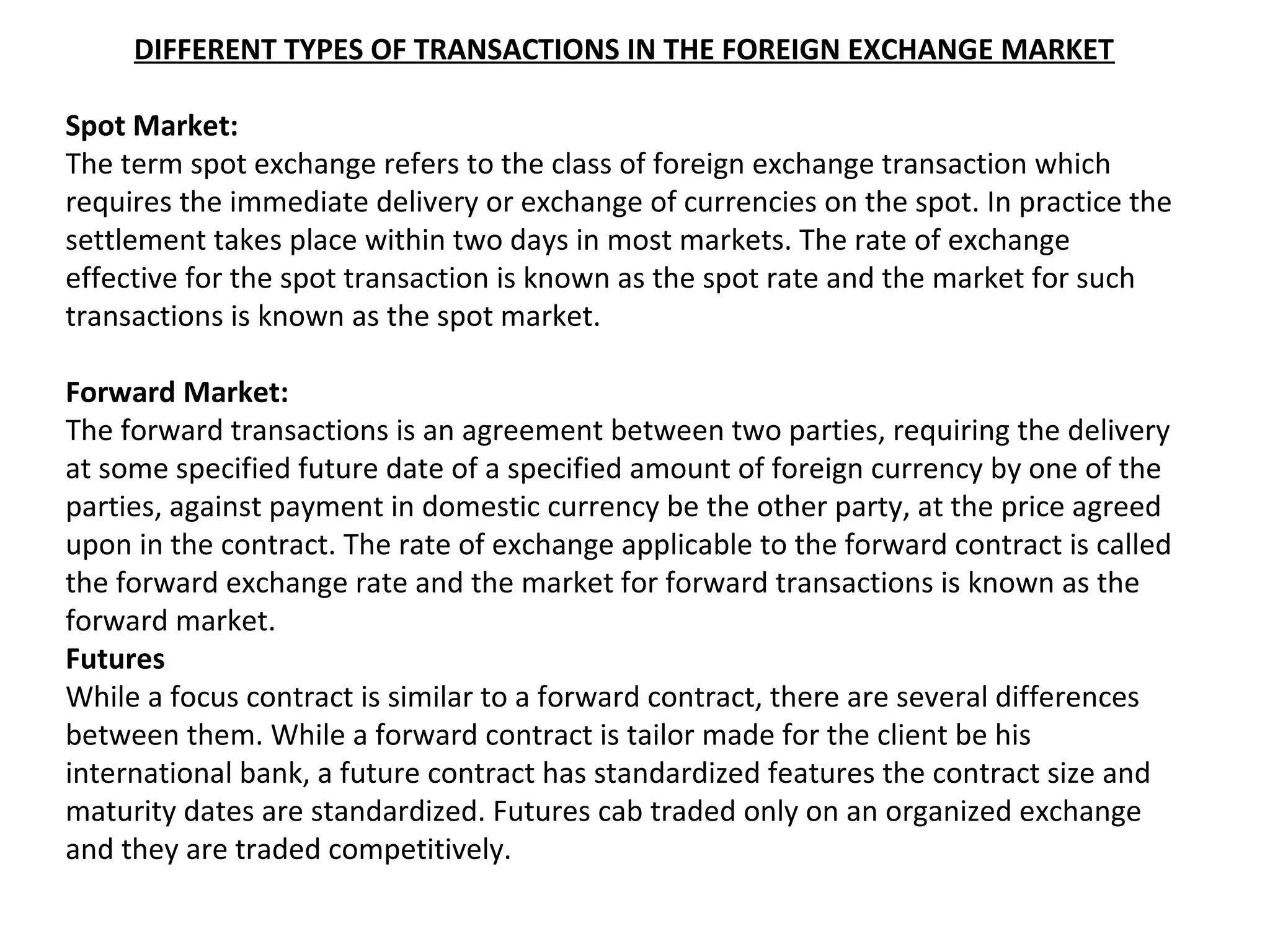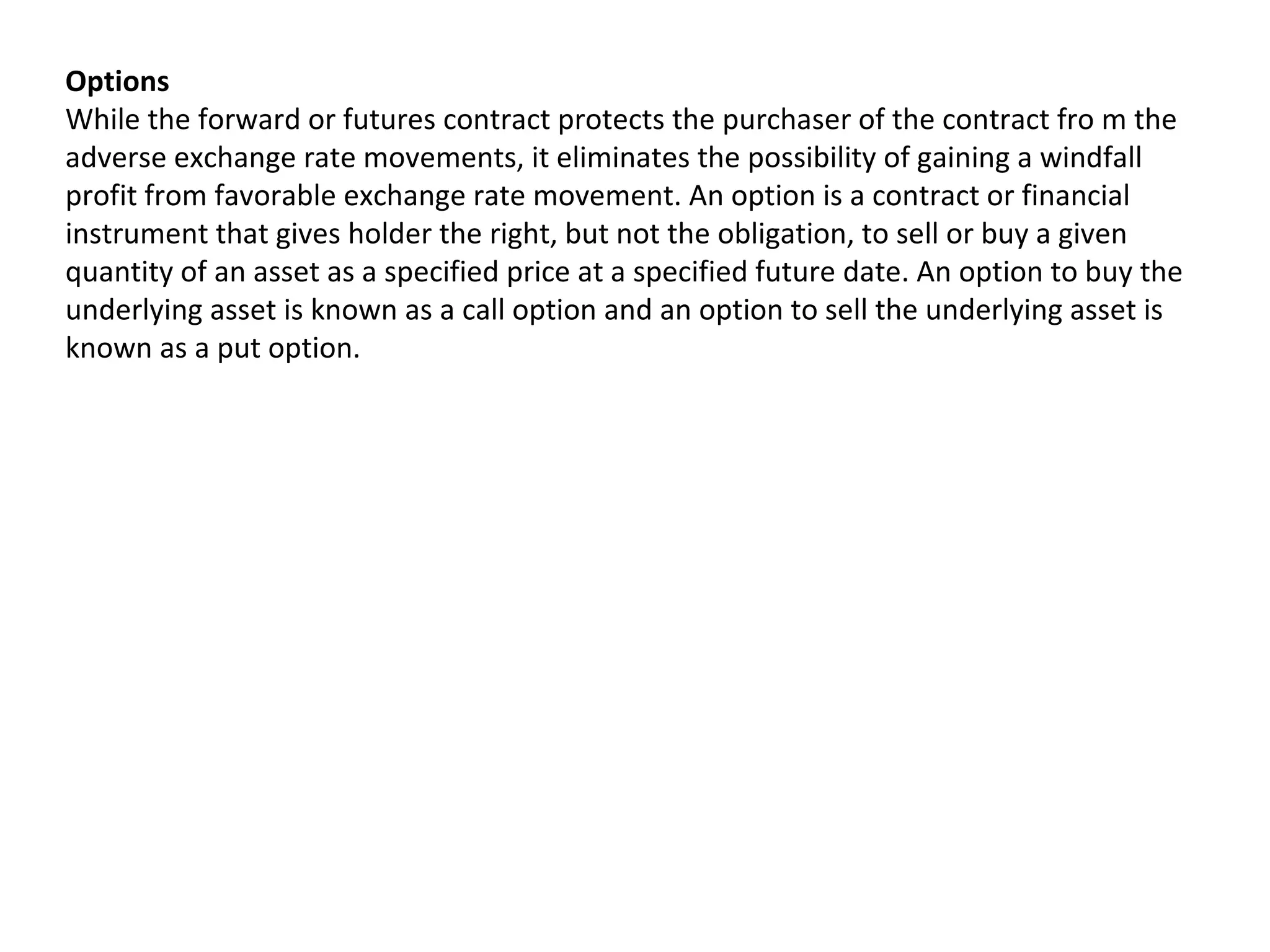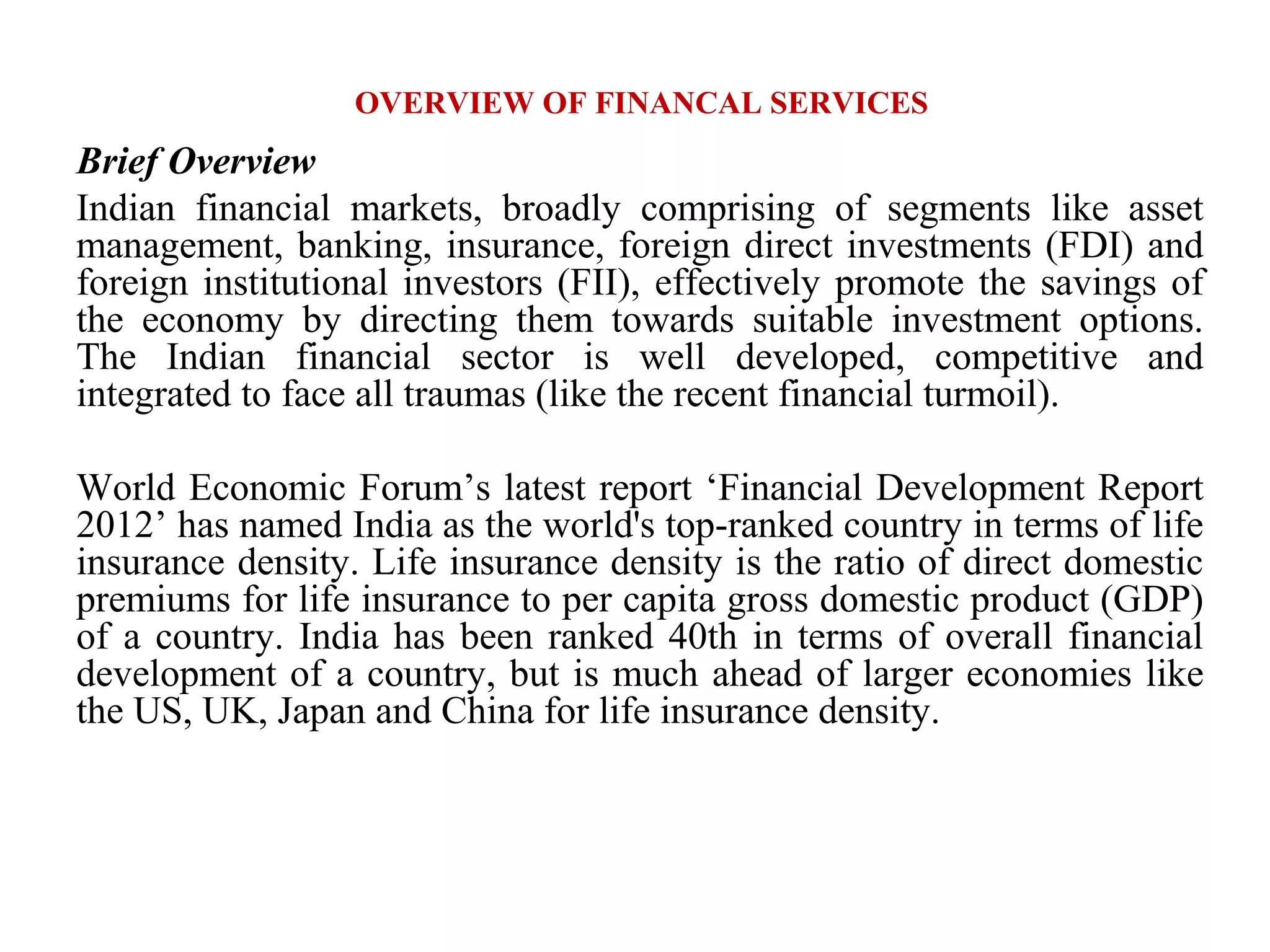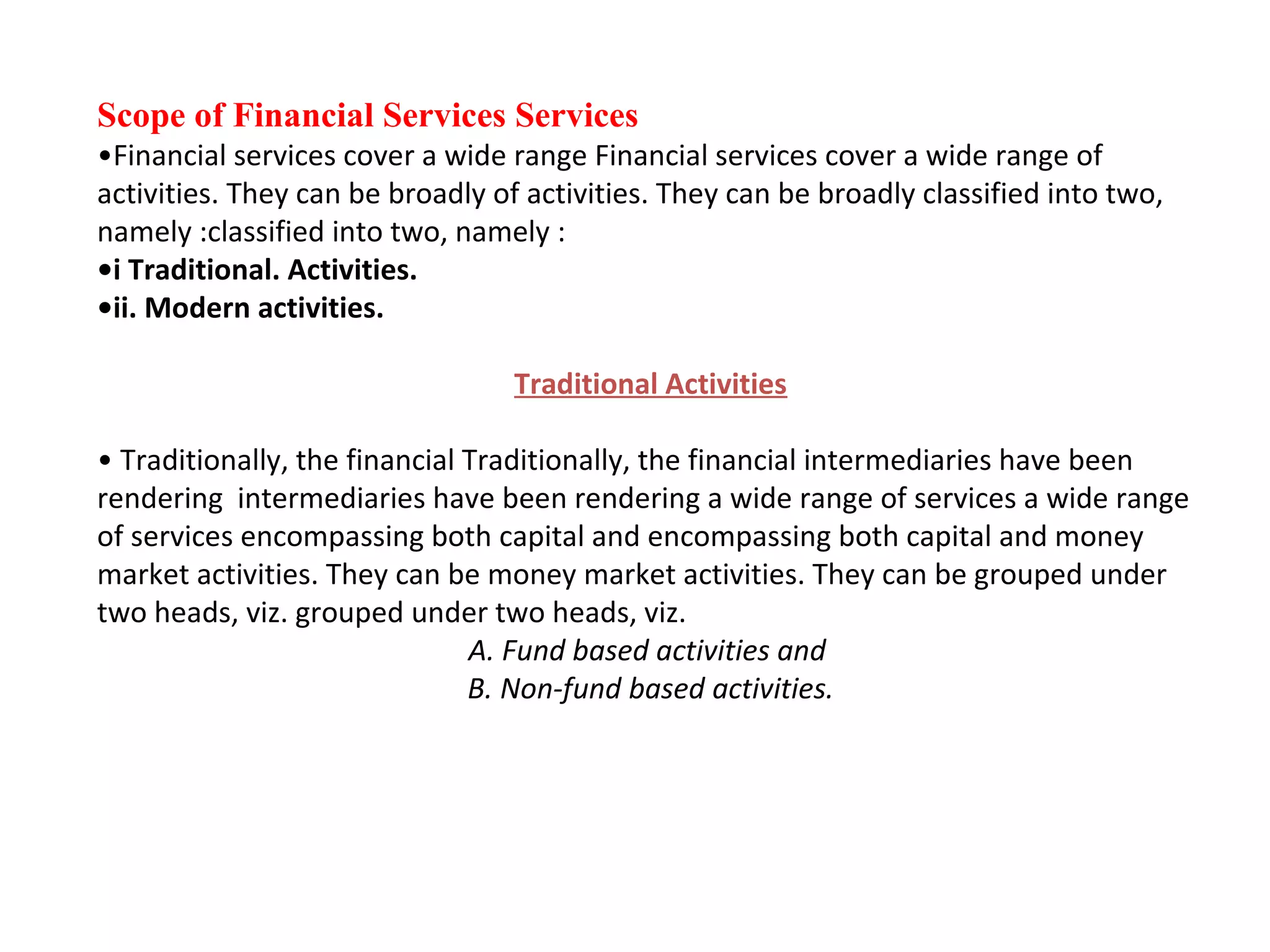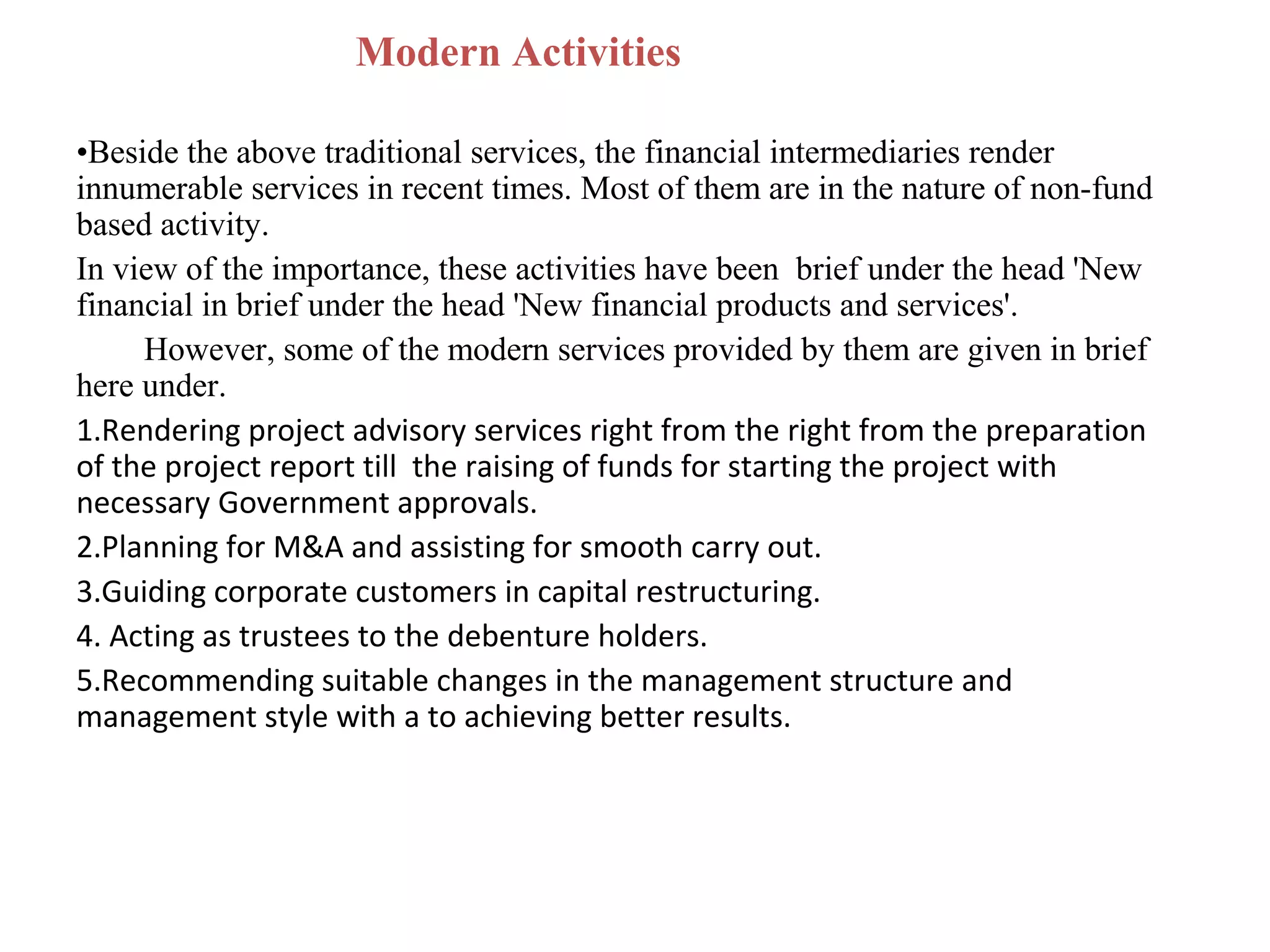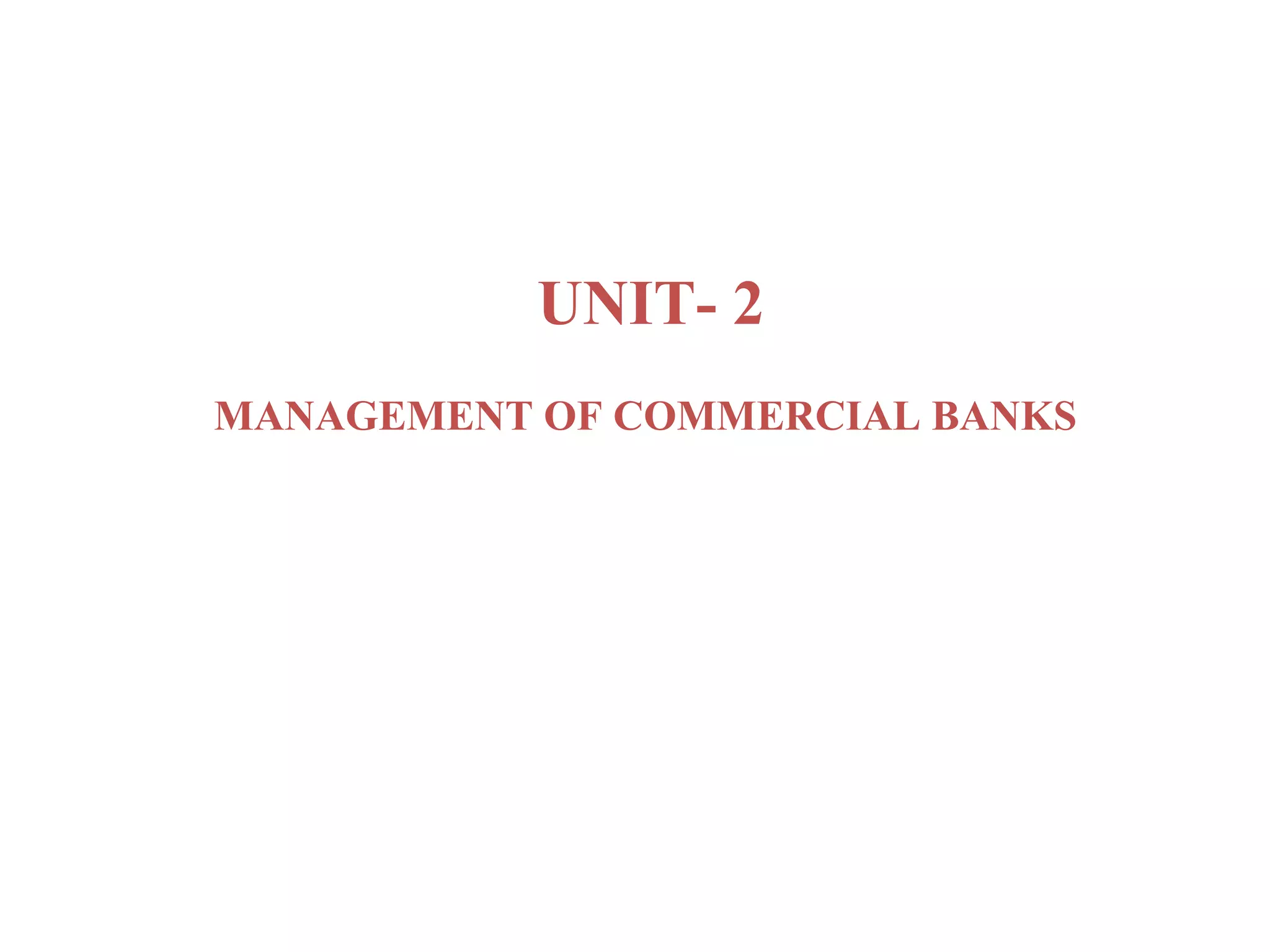The Reserve Bank of India (RBI) is the central bank of India that monitors and implements monetary policy. It acts as a banker to the government and other banks, manages government securities, controls money supply and credit in the economy, regulates foreign exchange, and publishes important economic data. RBI also plays a promotional role in developing the banking and financial system.


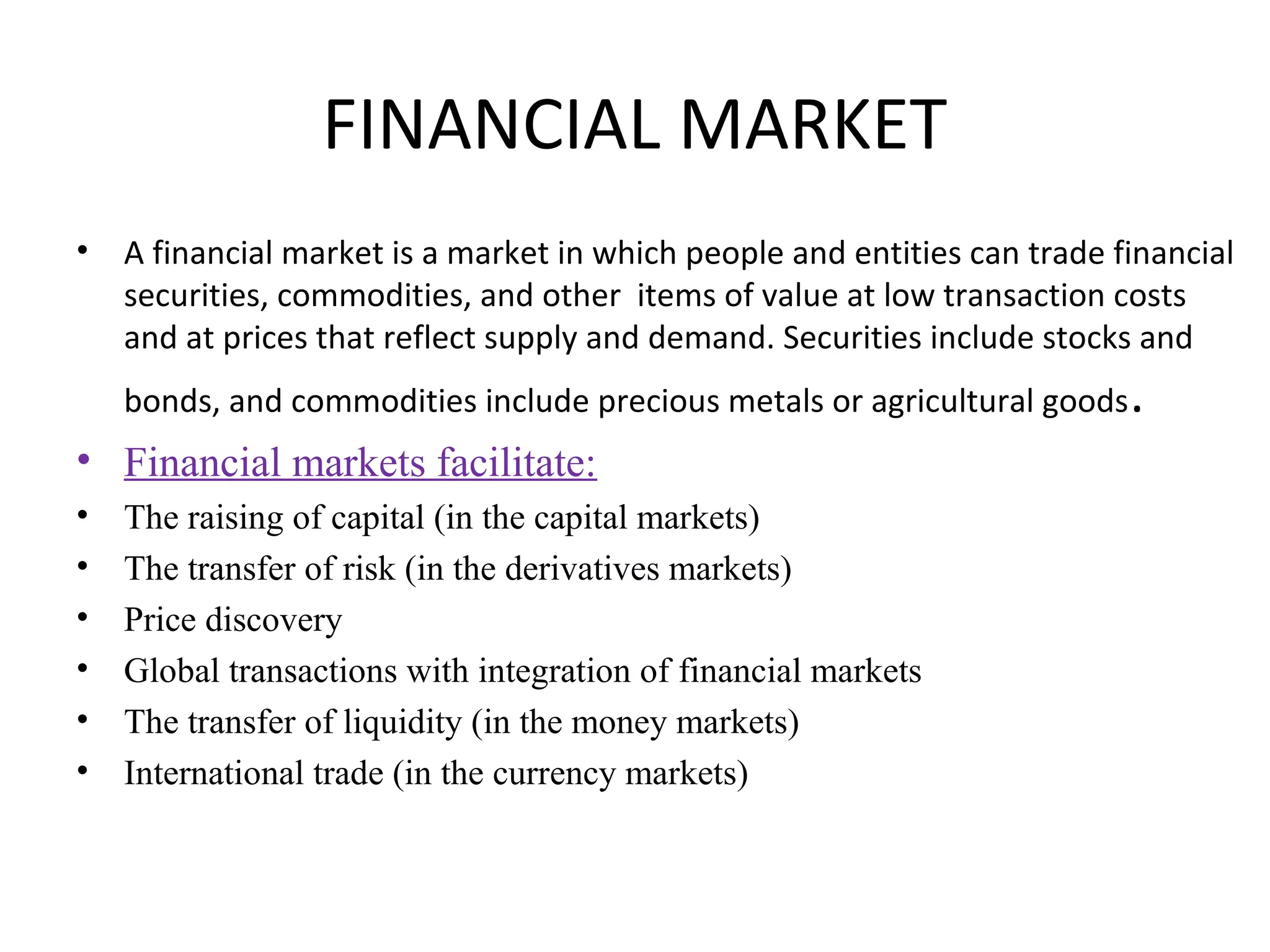


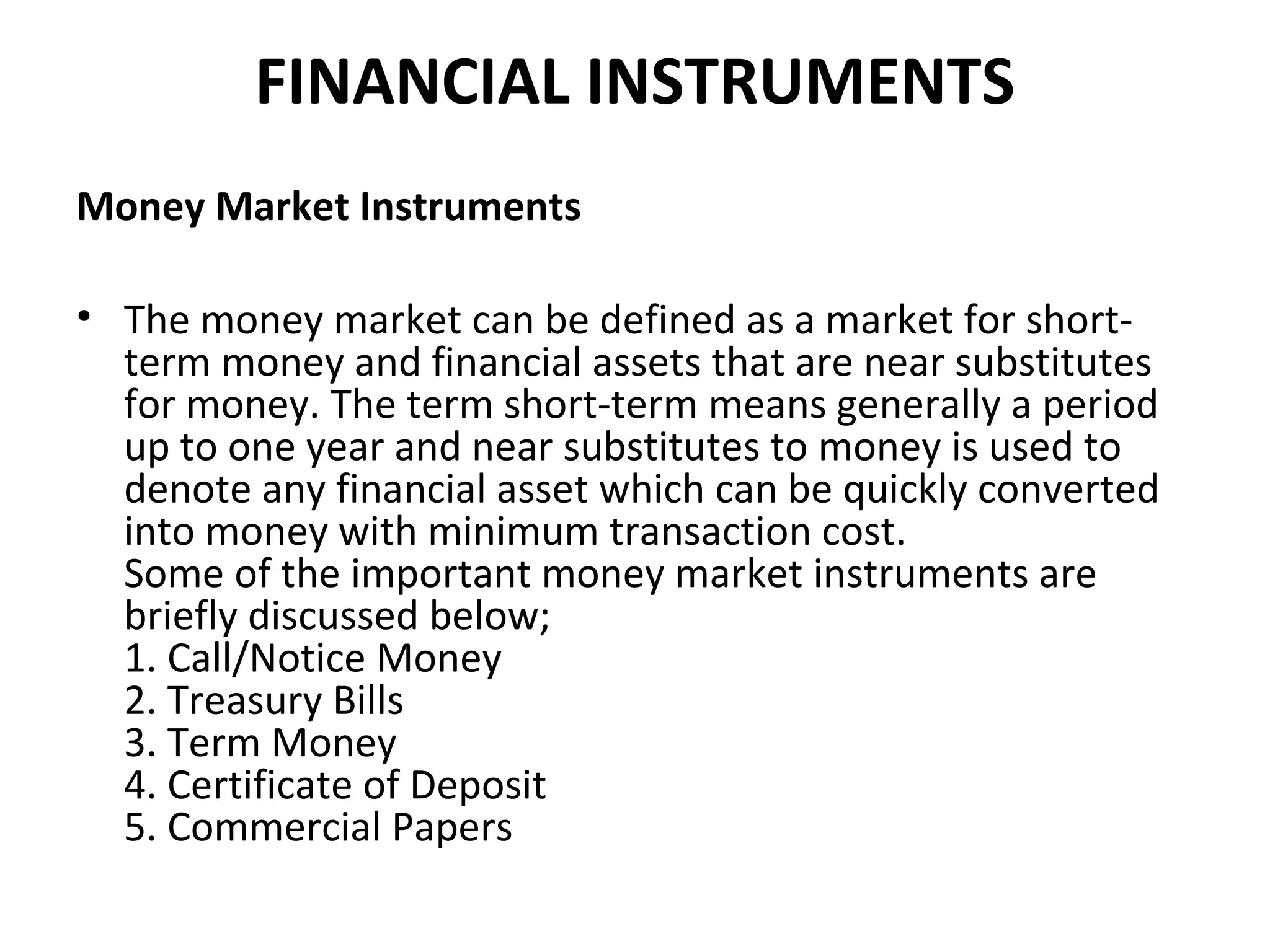

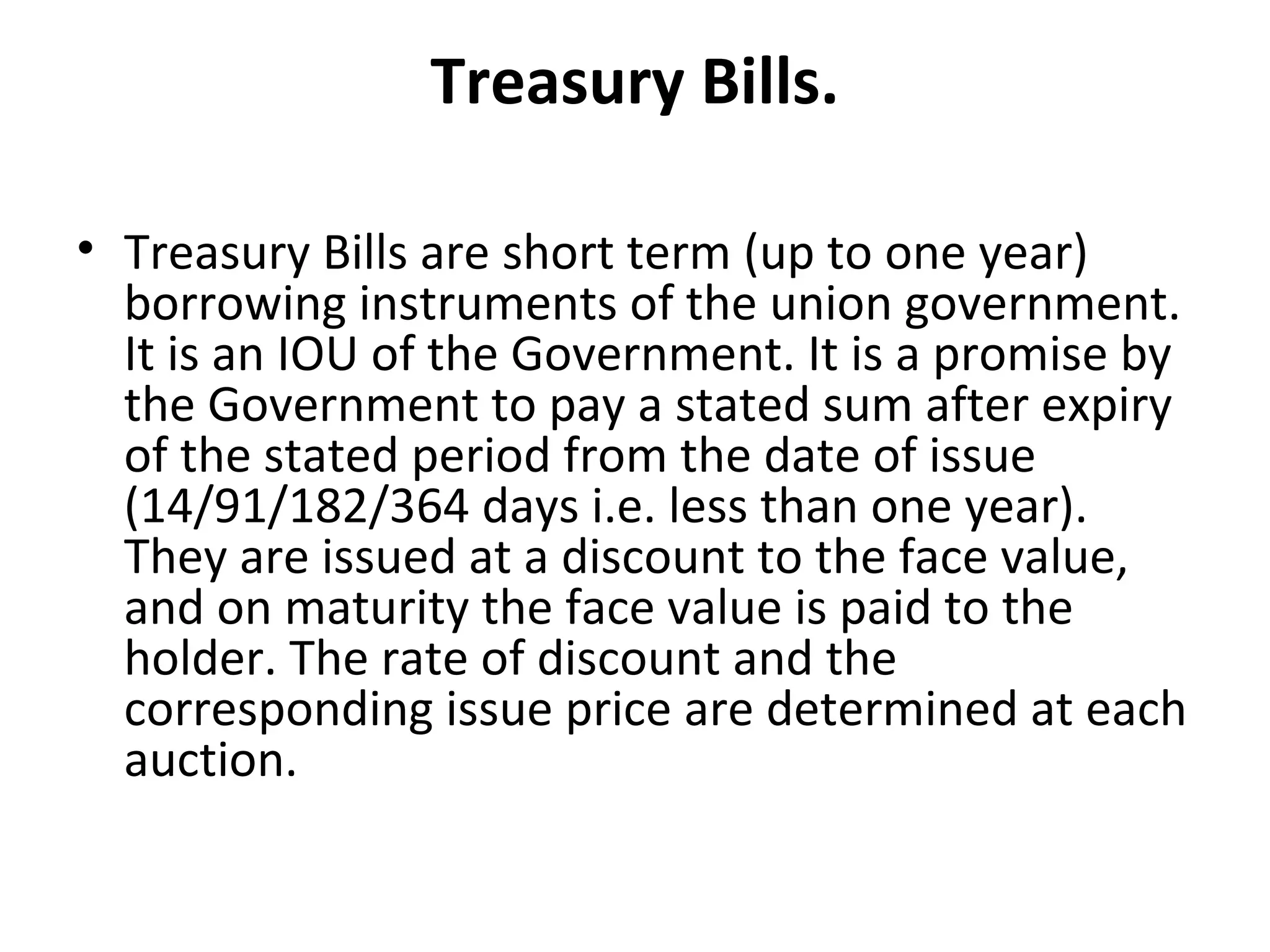

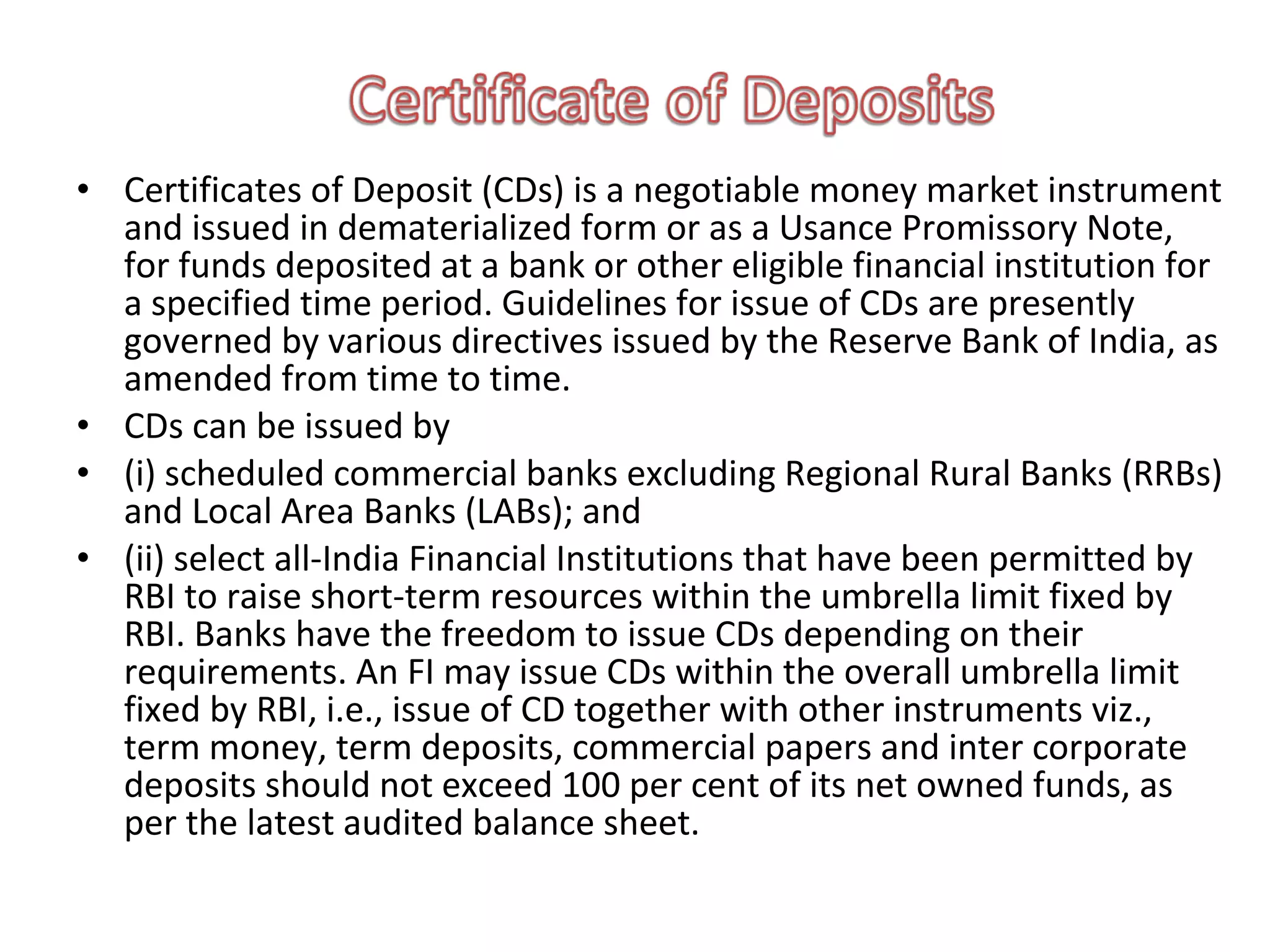
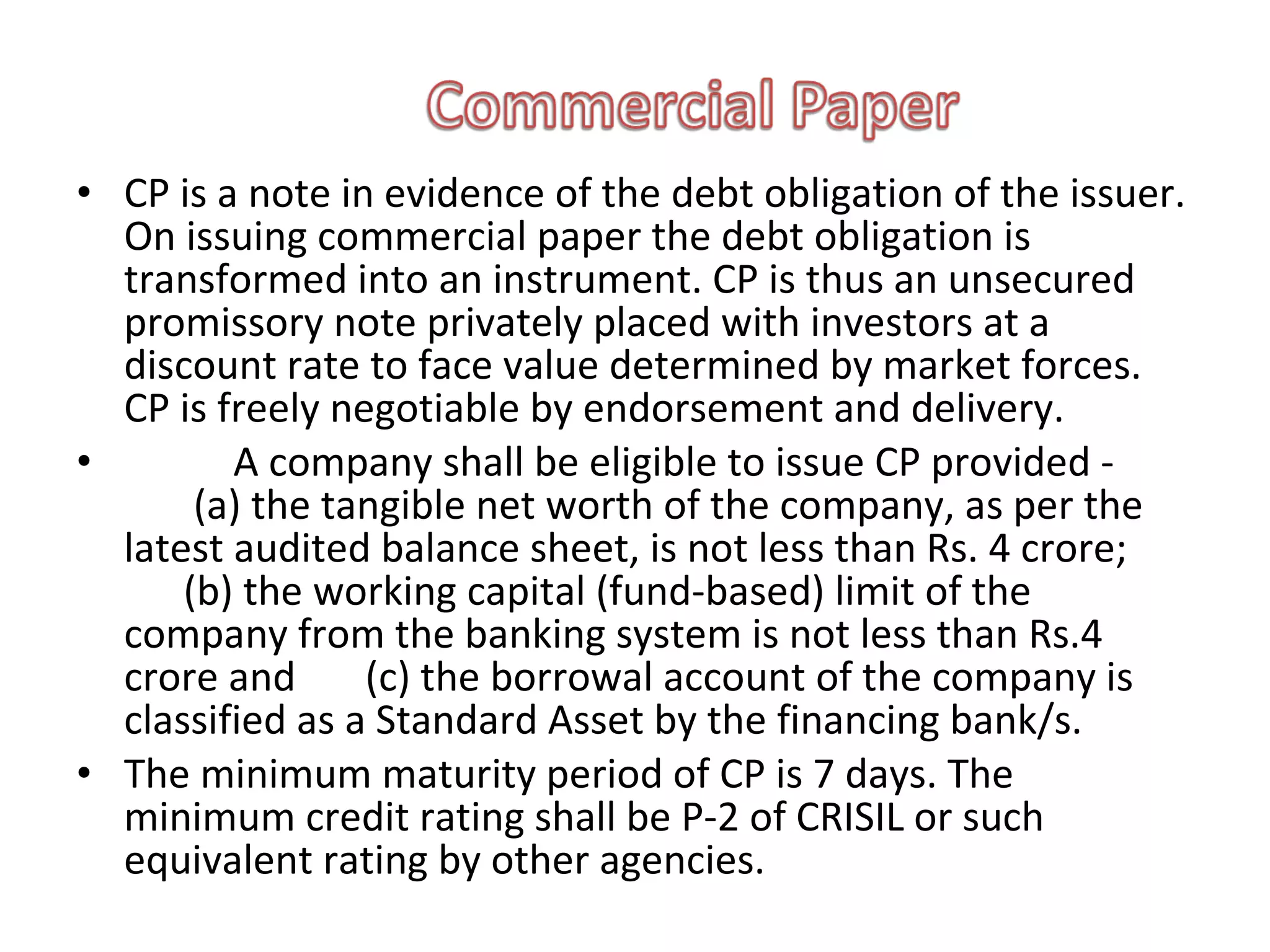


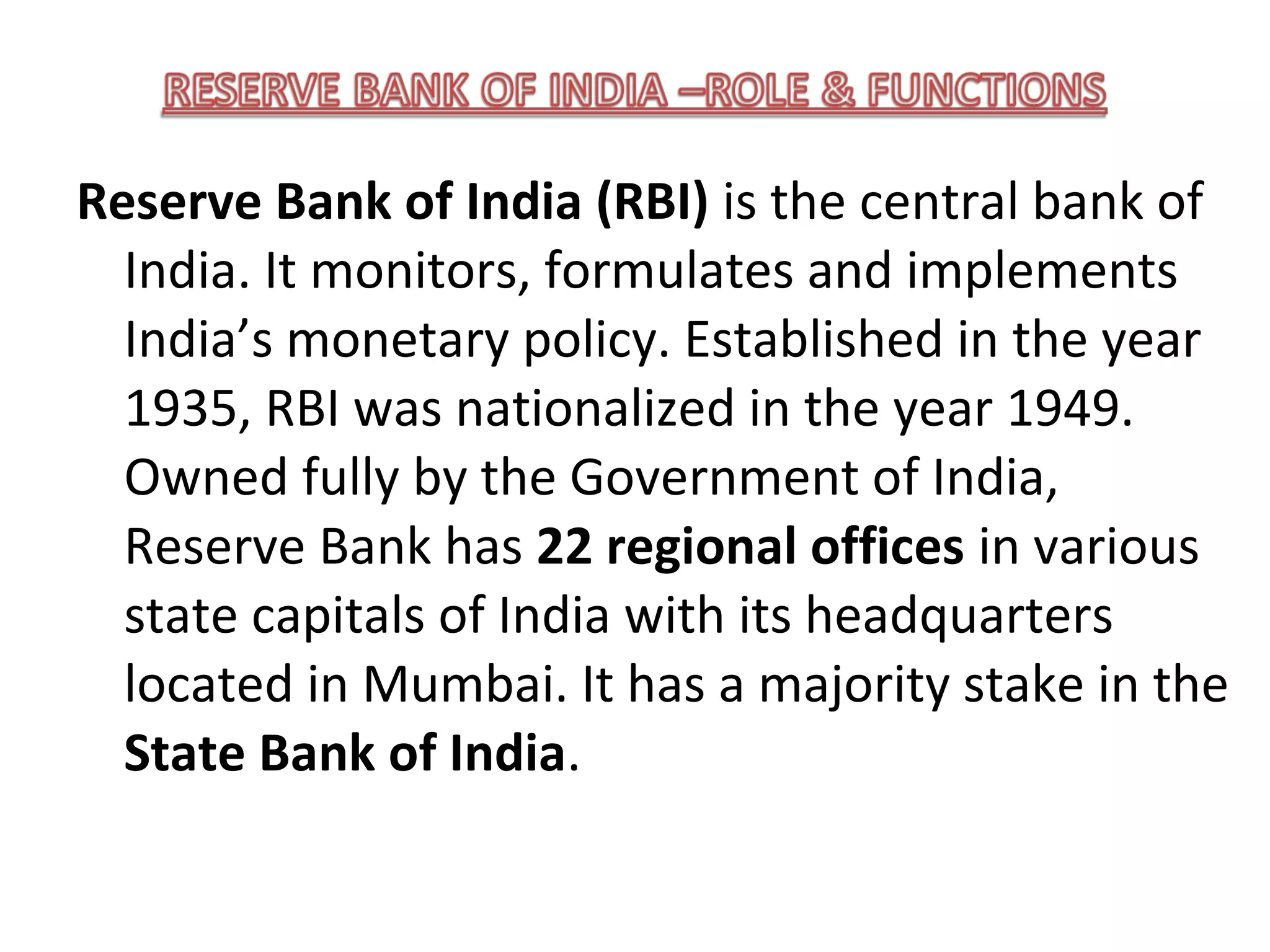
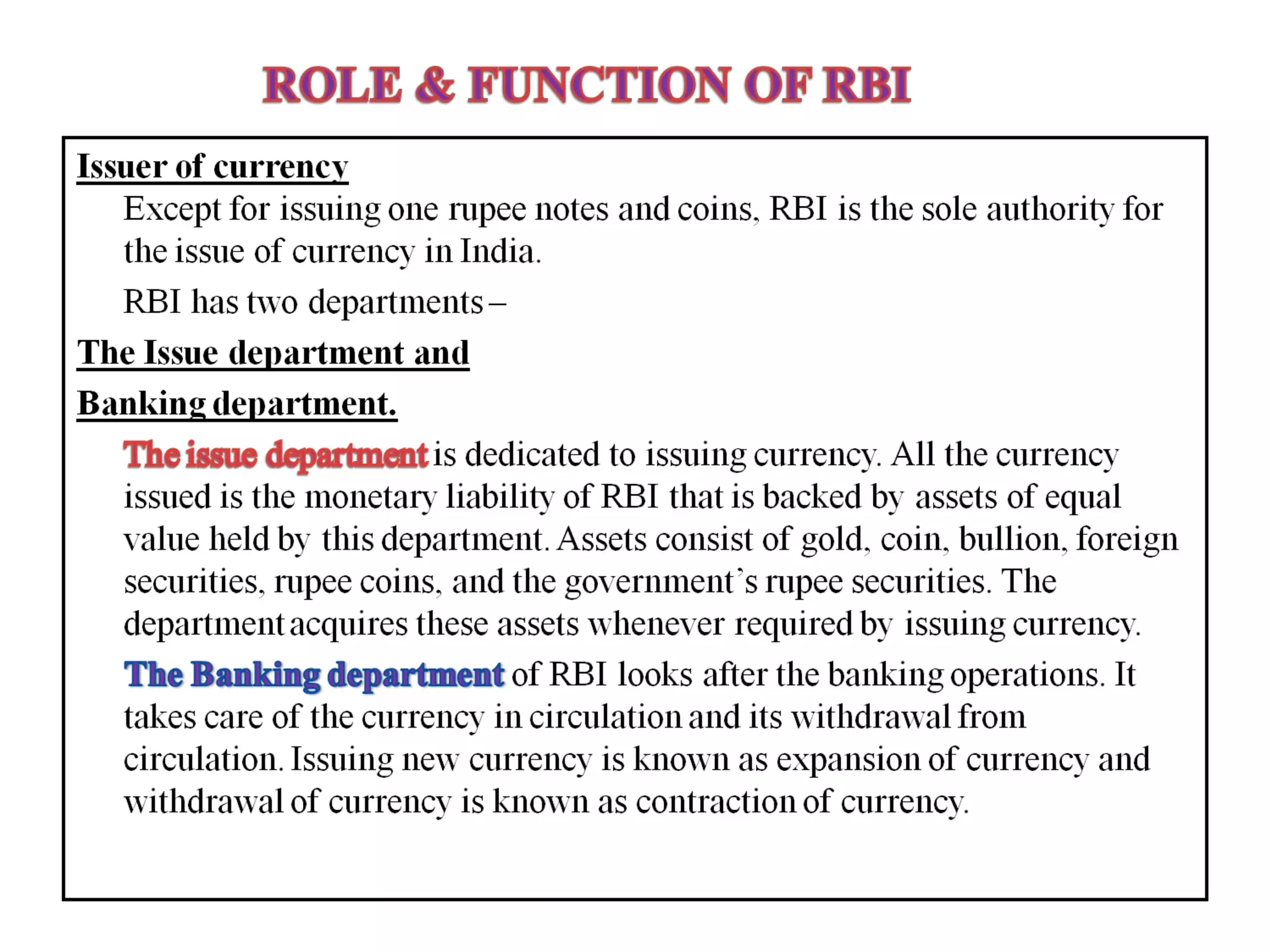
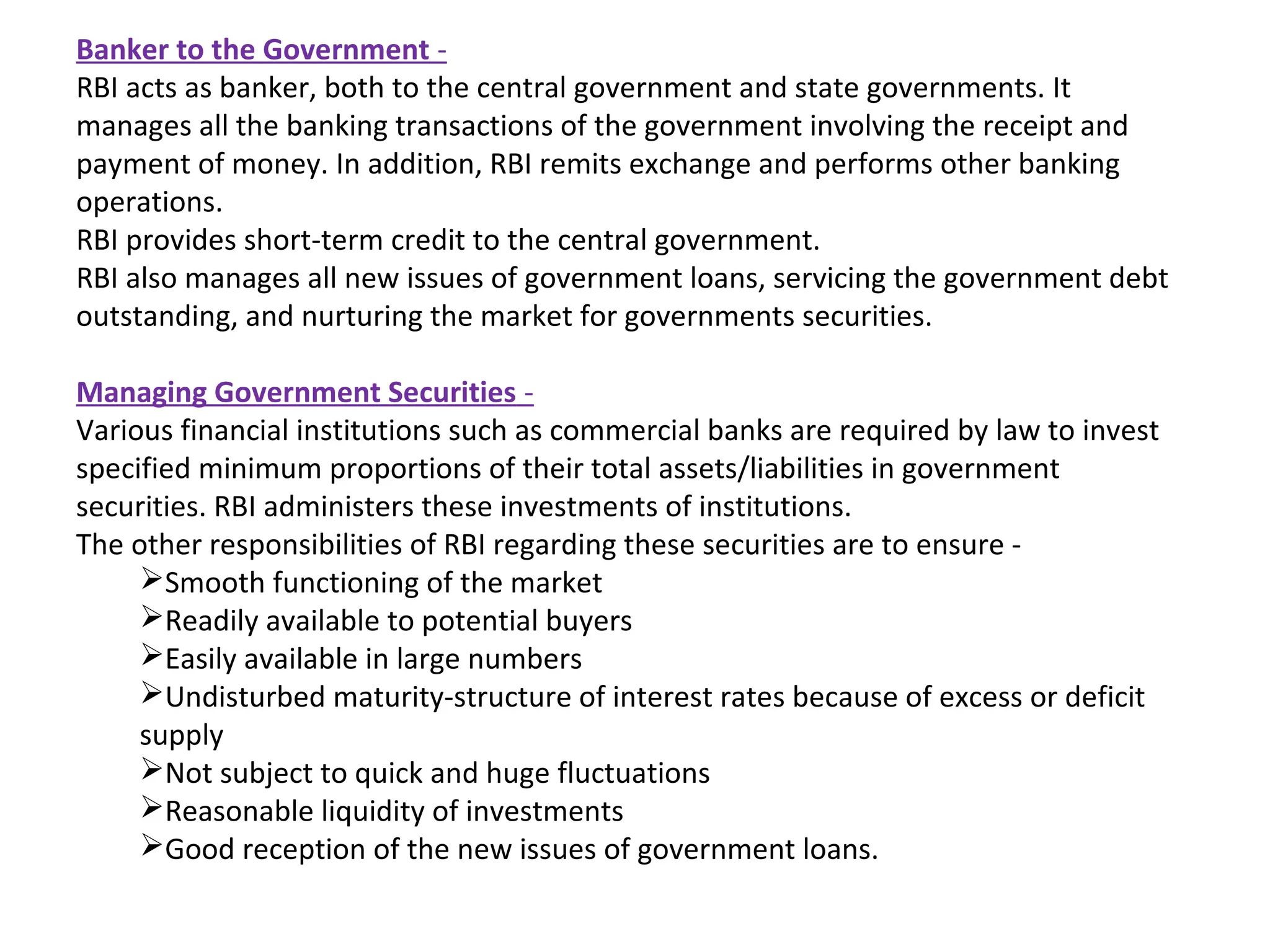
![Banker to Other Banks
The role of RBI as a banker to other banks is as follows:
Holds some of the cash reserves of banks
Lends funds for short period
Provides centralized clearing and quick remittance facilities
RBI has the authority to statutorily ensure that the scheduled commercial banks deposit a stipulated
ratio of their total net liabilities. This ratio is known as cash reserve ratio [CRR]. However, banks can
use these deposits to meet their temporary requirements for interbank clearing as the maintenance of
CRR is calculated based on the average balance over a period.
Controller of Money Supply and Credit -
In a planned economy, the central bank plays an important role in controlling the paper currency
system and inflationary tendency. RBI has to regulate the claims of competing banks on money
supply and credit. RBI also needs to meet the credit requirements of the rest of the banking system.
RBI needs to ensure promotion of maximum output, and maintain price stability and a high rate of
economic growth. To perform these functions effectively, RBI uses several control instruments such
as -
Open Market Operations
Changes in statutory reserve requirements for banks
Lending policies towards banks
Control over interest rate structure
Statutory liquidity ration of banks.](https://image.slidesharecdn.com/mfisppt-130206041655-phpapp02/75/Mfis-ppt-17-2048.jpg)
![Exchange Manager and Controller -
RBI manages exchange control, and represents India as a member of the
international Monetary Fund [IMF]. Exchange control was first imposed on India
in September 1939 when World War II started and continues till date. Exchange
control was imposed on both receipts and payments of foreign exchange.
Publisher of Monetary Data and Other Data -
RBI maintains and provides all essential banking and other economic data,
formulating and critically evaluating the economic policies in India. In order to
perform this function, RBI collects, collates and publishes data regularly. Users
can avail this data in the weekly statements, the RBI monthly bulletin, annual
report on currency and finance, and other periodic publications.
Promotional Role of RBI -
Promotion of commercial banking
Promotion of cooperative banking
Promotion of industrial finance
Promotion of export finance
Promotion of credit to weaker sections
Promotion of credit guarantees
Promotion of differential rate of interest scheme
Promotion of credit to priority sections including rural & agricultural sector.](https://image.slidesharecdn.com/mfisppt-130206041655-phpapp02/75/Mfis-ppt-18-2048.jpg)


